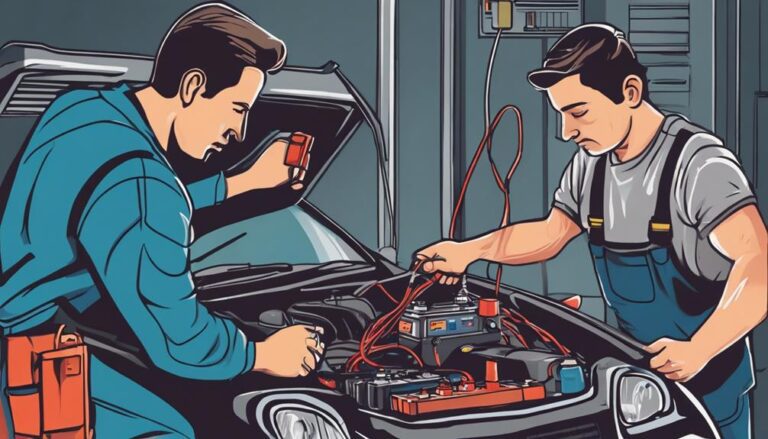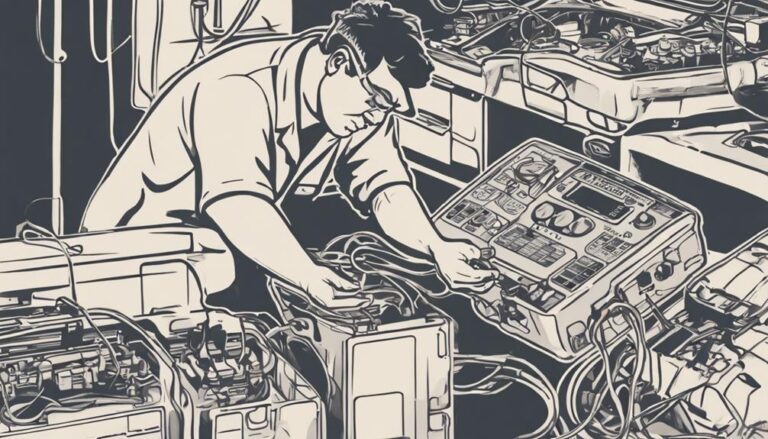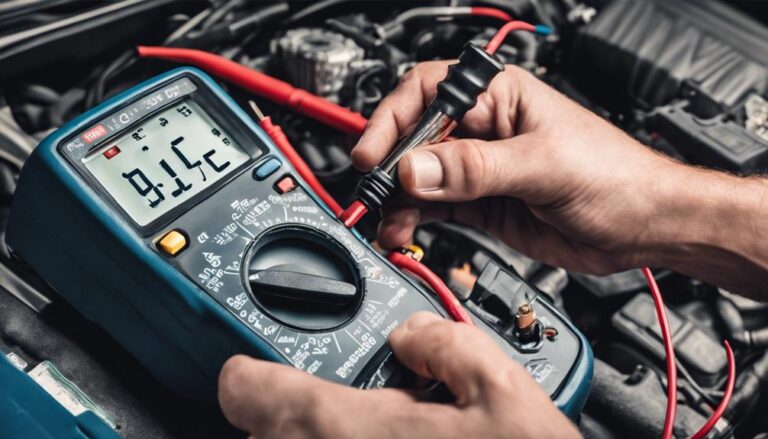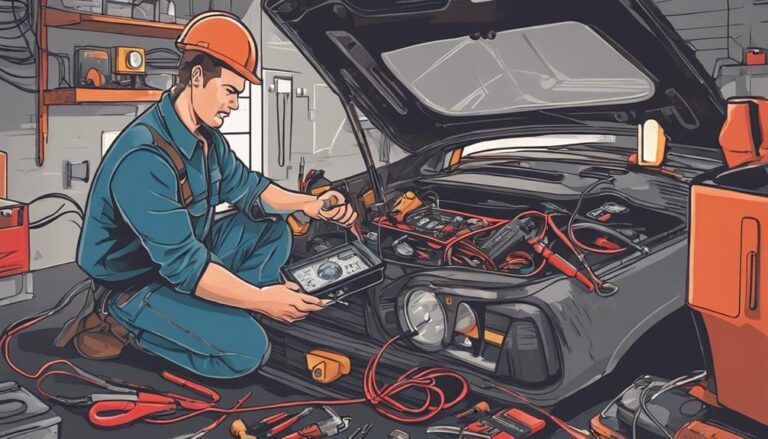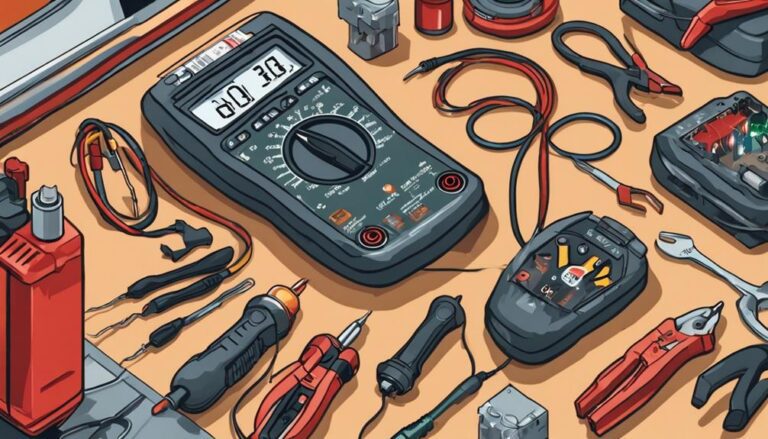Fixing Car Lighting and Wiring Issues: A Guide
Have you ever wondered why your car's headlights flicker intermittently? It could be a sign of a deeper electrical issue that requires attention.
Understanding the intricacies of car lighting and wiring systems is crucial for maintaining a safe and reliable vehicle.
By following a systematic approach to troubleshooting and fixing common lighting and wiring problems, you can not only ensure your safety on the road but also potentially save time and money on costly repairs.
So, let's shed some light on how you can tackle these issues effectively.
Key Takeaways
- Check bulbs, wiring, and connections for common car lighting issues.
- Inspect headlight bulbs, wiring, and voltage for troubleshooting headlight problems.
- Verify fuses, relays, and wiring integrity to fix turn signal malfunctions.
- Examine bulbs, switches, and wiring for addressing brake light problems.
Common Car Lighting Problems
If you're experiencing dim headlights, flickering lights, non-functional turn signals, or brake lights not working, you may be dealing with common car lighting problems that require attention.
Checking connections and testing circuits are essential steps in resolving these issues. Dim headlights could stem from a faulty bulb, wiring problems, or poor connections. Ensure all connections to the headlights are secure and free from corrosion.
Flickering lights may indicate a failing alternator, loose wiring, or bad ground connections. Test the circuits to pinpoint the exact cause and address it promptly. For non-functional turn signals, check for blown fuses, faulty relays, or damaged switches.
Brake lights not working might be due to a burned-out bulb, a faulty brake light switch, or wiring issues. Investigate each possibility by methodically checking connections and testing circuits to restore proper functionality.
Troubleshooting Headlight Issues
Wondering how to effectively troubleshoot headlight issues in your vehicle? Here are some steps to help you diagnose and resolve common problems:
- Check headlight bulbs: Look for signs of damage or burnout that may indicate the need for replacement.
- Inspect wiring harness: Ensure there are no loose connections or fraying wires that could affect headlight functionality.
- Test voltage: Utilize a multimeter to check the voltage at the headlight socket, ensuring a proper power supply.
- Clean headlight lens: Regular cleaning can improve visibility and maintain optimal lighting performance.
- Consider upgrades: LED or HID headlights can provide better brightness and energy efficiency.
Fixing Turn Signal Wiring Problems
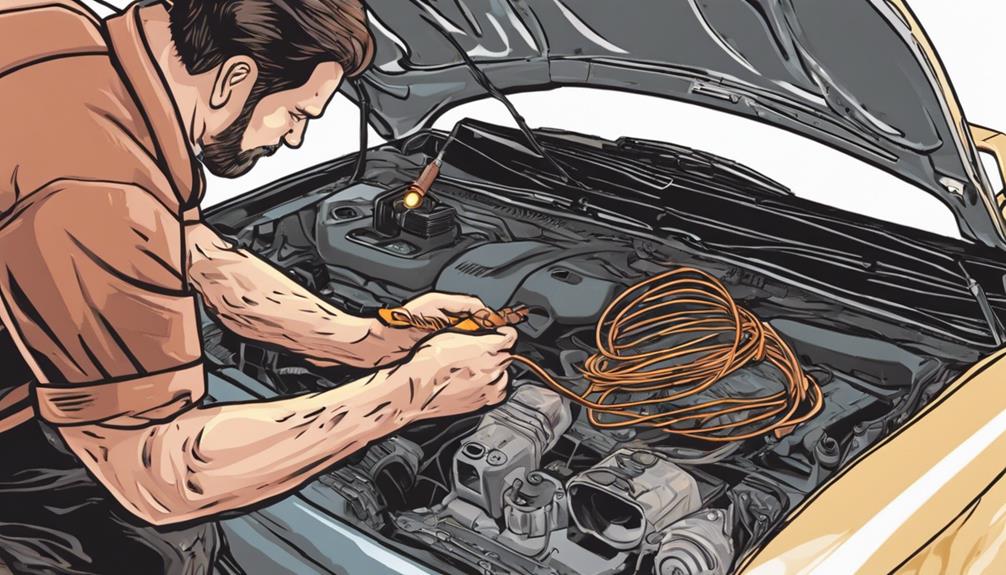
To address turn signal wiring problems effectively, start by checking the turn signal fuse in the fuse box to ensure it isn't causing the issue.
If the fuse is intact, proceed to inspect the turn signal flasher relay, typically located under the dashboard or near the steering column, to verify its proper functionality.
Next, test the turn signal switch on the steering column to ensure it's sending the correct signals to the lights.
Diagnosing turn signal failures involves examining the wiring harness for any damaged or frayed wires that may be interrupting the turn signal operation.
Additionally, it's crucial to verify the ground connection for the turn signal lights to ensure a proper electrical path for functionality.
Addressing Brake Light Malfunctions
When diagnosing brake light malfunctions, start by visually inspecting the bulbs for any signs of damage or darkness. Brake light troubleshooting involves checking various components to pinpoint the issue accurately.
Here are some steps to address brake light problems effectively:
- Check Bulbs: Inspect for physical damage or darkness that indicates a burnt-out bulb.
- Test Brake Light Switch: Use a multimeter to test the brake light switch for continuity to ensure proper functionality.
- Inspect Wiring Harness: Look for any damage, corrosion, or loose connections in the wiring harness that could be affecting the brake lights.
- Verify Ground Connections: Ensure that the ground connections are secure and free of corrosion to maintain proper electrical flow.
- Consider Fuse Status: Check the fuse related to the brake lights to rule out any issues with the electrical supply.
Resolving Interior Lighting Troubles
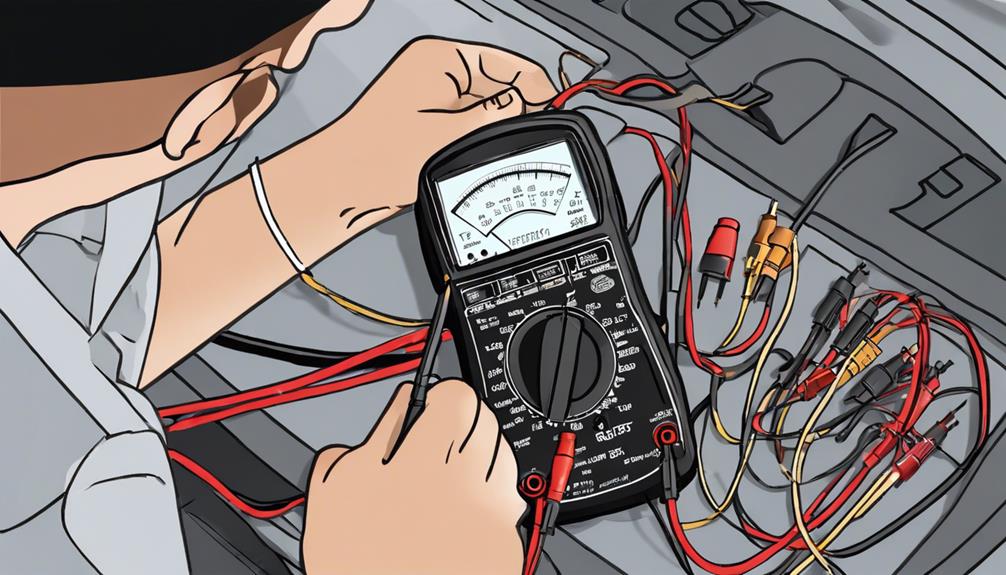
Examine the dimmer switch, dome light switch, and door switches to pinpoint the source of interior lighting issues, such as faulty switches or wiring problems. If your interior lights aren't working correctly, start by checking the dimmer switch adjustment to ensure it isn't turned off or set too low.
Next, inspect the dome light for any visible damage or loose connections that may require dome light repair. Additionally, perform a thorough door switch inspection to guarantee that the switches are functioning correctly when the doors are opened or closed.
If these checks don't resolve the problem, consider replacing the interior light fuse as a blown fuse can also cause interior lighting troubles. It's crucial to replace the fuse with the appropriate amp rating to prevent electrical issues. Remember to test the interior light circuit using a multimeter to identify any underlying wiring problems accurately.
Frequently Asked Questions
Can You Fix an Electrical Problem in a Car?
Yes, you can fix an electrical problem in a car. By understanding wiring troubleshooting techniques and attempting DIY car electrical repairs, you can successfully diagnose and address issues, ensuring your vehicle operates safely and efficiently.
How Do You Trace Electrical Problems in a Car?
When tracing electrical problems in a car, start by measuring voltage drops at key points. Inspect for faulty connections, like corroded terminals or loose wiring. Follow a systematic approach to isolate and fix issues effectively.
Are Electrical Problems in Cars Expensive to Fix?
Fixing car electrical problems can be costly, depending on the issue. Some simple fixes like changing a fuse are inexpensive, but complex problems such as faulty wiring may require professional help. DIY solutions can save money.
What Is the Most Common Cause of Electrical Problems in Cars?
When your car's electrical system acts up, faulty connections and corroded terminals are often the culprits. These issues can lead to a variety of symptoms, so keeping an eye on your car's electrical health is crucial.
Conclusion
In conclusion, just like how a well-lit road guides a driver safely to their destination, addressing car lighting and wiring issues ensures a smooth and secure journey.
By following the guide's troubleshooting steps and utilizing genuine auto electric parts, you can illuminate the path ahead and prevent potential hazards on the road.
Remember, proper maintenance and timely repairs are the keys to keeping your vehicle's electrical system in top condition for a reliable and efficient drive.
Drive safe!


